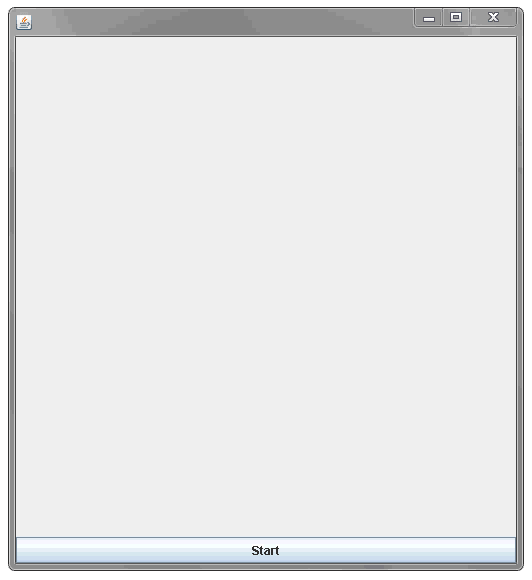Me: Where exactly is this code? Is it in a paint/paintComponent method?
OP: it is in paintComponent. I use it to make animation, but I am not sure it is a good way.
You're right it isn't a good way. Don't ever call Thread.sleep in the paintComponent method. I would avoid the Thread.sleep all together and use a javax.swing.Timer. See more How to Use Swing Timers
See examples here and here and here and here.
You could...
Use a list of Images and every iteration firing of the Timer event, add another Image to the List<Image> and call repaint()
You could...
Have an MyImage object class that has an Image field and a boolean draw field. In the Timer, loop through the MyImage objects and do something like
for (MyImage image: images) {
if (!image.isDraw()) {
image.setDraw(true);
break;
}
}
repaint();
For the MyImage List just loop through them in the paintComponent method and call it drawImage method, that you create.
Run this exmaple, showing the first option

import java.awt.Dimension;
import java.awt.Graphics;
import java.awt.Image;
import java.awt.event.ActionEvent;
import java.awt.event.ActionListener;
import java.io.IOException;
import java.net.URL;
import java.util.ArrayList;
import java.util.List;
import java.util.logging.Level;
import java.util.logging.Logger;
import javax.imageio.ImageIO;
import javax.swing.JFrame;
import javax.swing.JPanel;
import javax.swing.SwingUtilities;
import javax.swing.Timer;
public class AnimateImages extends JPanel {
private static final int IMAGE_ROWS = 10;
private static final int IMAGE_COLS = 10;
private static final int IMAGE_SIZE = 50;
private static final int DIM_WIDTH = IMAGE_COLS * IMAGE_SIZE;
private final List<MyImage> images;
private Image image;
private int currX = -IMAGE_SIZE;
private int currY;
public AnimateImages() {
try {
image = ImageIO.read(new URL("http://swoo.co.uk/content/images/icons/stackoverflow.png"));
} catch (IOException ex) {
Logger.getLogger(AnimateImages.class.getName()).log(Level.SEVERE, null, ex);
}
images = createImages();
Timer timer = new Timer(100, new ActionListener() {
@Override
public void actionPerformed(ActionEvent e) {
for (MyImage image : images) {
if (!image.isDraw()) {
image.setDraw(true);
break;
}
repaint();
}
}
});
timer.start();
}
private List<MyImage> createImages() {
List<MyImage> list = new ArrayList<>();
for (int i = 0; i < IMAGE_ROWS * IMAGE_COLS; i++) {
if (currX >= DIM_WIDTH) {
currX = 0;
currY += IMAGE_SIZE;
} else {
currX += IMAGE_SIZE;
}
list.add(new MyImage(image, currX, currY));
}
return list;
}
@Override
protected void paintComponent(Graphics g) {
super.paintComponent(g);
for (MyImage img : images) {
img.draw(g);
}
}
@Override
public Dimension getPreferredSize() {
return new Dimension(IMAGE_SIZE * IMAGE_COLS, IMAGE_SIZE * IMAGE_ROWS);
}
public class MyImage {
Image image;
int x, y;
boolean draw = false;
public MyImage(Image image, int x, int y) {
this.image = image;
this.x = x;
this.y = y;
}
public void setDraw(boolean draw) {
this.draw = draw;
}
public boolean isDraw() {
return draw;
}
public void draw(Graphics g) {
if (draw) {
g.drawImage(image, x, y, IMAGE_SIZE, IMAGE_SIZE, AnimateImages.this);
}
}
}
public static void main(String[] args) {
SwingUtilities.invokeLater(new Runnable() {
public void run() {
JFrame frame = new JFrame();
frame.add(new AnimateImages());
frame.setDefaultCloseOperation(JFrame.EXIT_ON_CLOSE);
frame.pack();
frame.setLocationRelativeTo(null);
frame.setVisible(true);
}
});
}
}